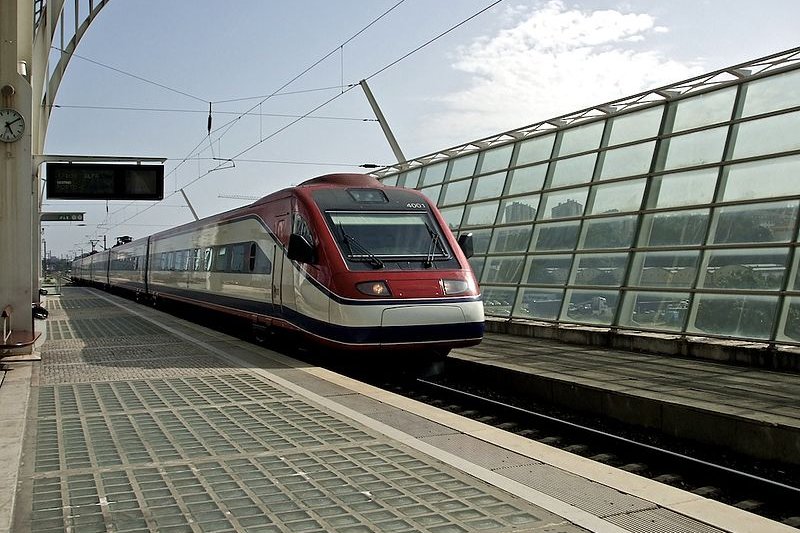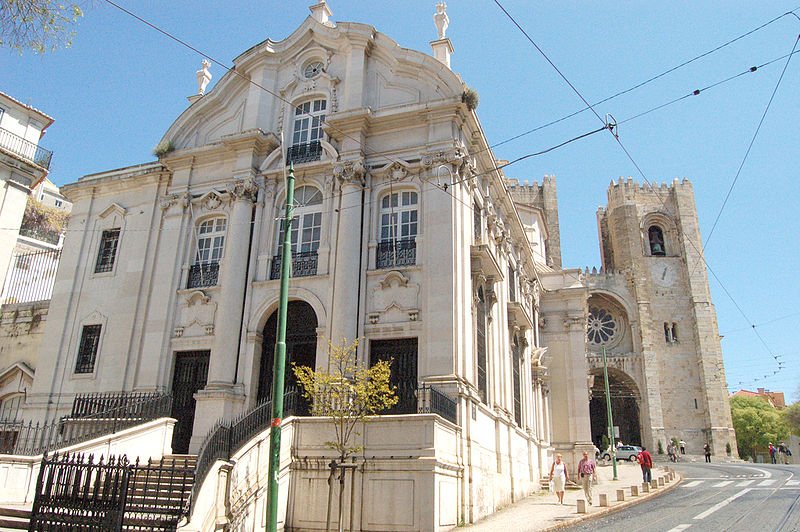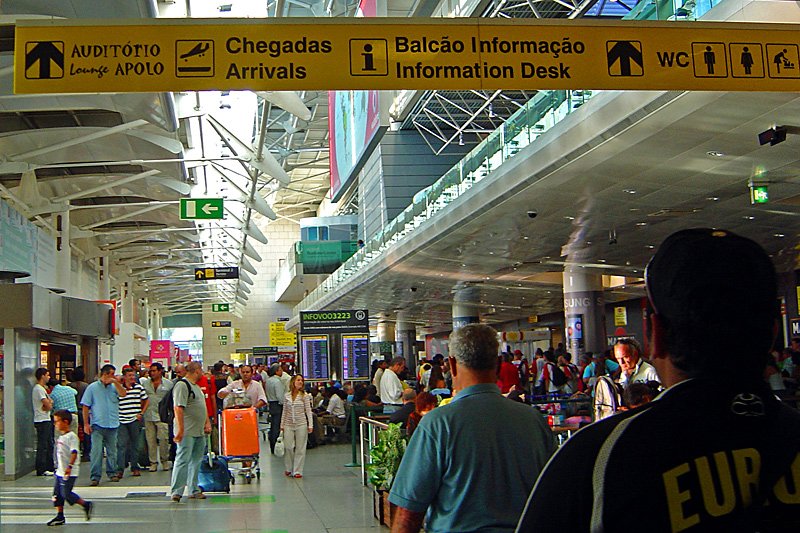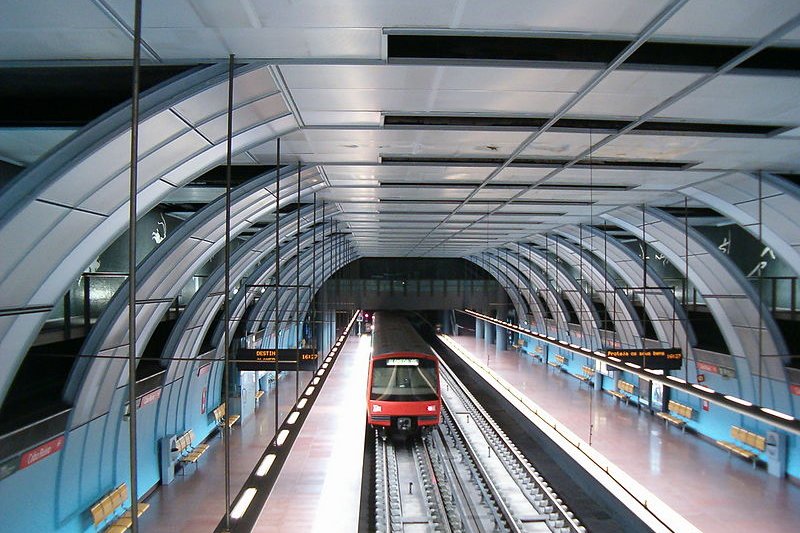
Lisbon, Portugal
Source: https://commons.wikimedia.org/wiki/File:Lisbon_3_of_3.jpg
Author: Osvaldo Gago

Lisbon is the capital and largest city in Portugal. The city covers 84.8 sq km (33 sq mi) and has a population of about 570,000 (2011 estimate). The urban area around Lisbon extends to 958 sq km (370 sq mi) and has a population of 2.4 million. It is the 12th most populous urban area within the European Union. The Lisbon Metropolitan Area is even bigger. It has a population of 3.34 million people, representing about 27% of the population of Portugal.

High speed train at Gare do Oriente, Lisbon
Source: https://commons.wikimedia.org/wiki/File:Flickr_-_nmorao_-_Alfa_Pendular_127,_Gare_do_Oriente,_2008.05.03.jpg
Author: Nuno Morão

Lisbon is a very ancient city. The area around it has been inhabited since Neolithic times. There is evidence that the Phoenicians had a trading post in the area around 1200 BC. During ancient times, it was known by different names, including Allis Ubbo under the Phoenicians, Ulyssippo in Latin and Olissipo in Greek. According to tradition, Ulysses (Odysseus) founded the city after he left Troy, and for that reason, the city was named after him.
Lisbon was conquered by the Moors in AD 711, bringing with them a Muslim influence to the city. During that time, Islam became the official religion although Christians were allowed to practise their religion. In 1147, Afonso I reconquered Lisbon and brought back Christian rule. Muslims were forced to embrace Roman Catholicism by force or expelled.
In 1255 Lisbon became the capital of Portugal. It had become an important trading post with northern Europe and Mediterranean cities. Its properity was further enhanced in the 15th century, during the Age of Discovery, when many Portuguese expeditions made it the European hub of commerce with newly discovered lands in Africa, India, the Far East and Brazil. The might of the Portuguese was eventually eroded when it lost its independence to Spain in the 1580 succession crisis. It regained its independence in the 1640 revolt.

St Anthony Church, Lisbon
Source: https://commons.wikimedia.org/wiki/File:StAnthonyLisbon-CCBY1.jpg
Author: Mis Quarrel

A number of earthquakes in the 16th and 17th centuries brought widespread devastation to Lisbon. By the 19th century, the city is just a shadow of its former glory. It was conquered by Napoléon Bonaparte in the first years of the 19th century. The city was to experience upheavals that led eventually to the murder of King Carlos I of Portugal in 1908. Two years later, the Portuguese Republic was established.
Today Lisbon is a modern city. Its metropolitan area has a per capita GDP of €34,850 (2009), the 10th highest in Europe and 40% higher than the EU's average. It has a major international airport and hgih-speed rail connecting it with the rest of the country, and by 2013, with Spain.
Lisbon enjoys a subtropical Mediterranean climate. Warmest months are July and August, with average high temperature exceeding 27.5°C (81.5°F). Coldest month is January, with average low temperature dropping to 8.1°C (46.6°F). December is the wettest month with 121.8 mm (4.79 in) of precipitation.

Lisbon Airport
Source: https://commons.wikimedia.org/wiki/File:Lisbon_Airport_Arrivals_2008.jpg
Author: Xuaxo

Going to Lisbon
By PlaneAeroporta da Portela (LIS) is the biggest airport in Portugal. It is located between Loures and Lisbon. It is the hub for TAP Portugal, a Star Alliance member airline.
From the airport, you can take a bus known as AeroBus and AeroShuttle, that connects the airport with more than 90 hotels in Lisbon. The ticket, costing €3.50, can also be used to take the public bus of Lisbon and is valid for 24 hours.
You can also take the public bus from the airport. Bus lines 5, 8, 22, 44, 45 and 83 all serve the airport. The fare is just €1.45.

Lisbon Metro
Source: https://commons.wikimedia.org/wiki/File:HPIM0530.JPG
Author: Koshelyev

A taxi ride to the city center costs approximately €10 according to meter. Luggage is charged €1.20 per piece. If you feel you are being swindled by a dishonest driver (being charged say €45 for the ride to the city), get a receipt and their taxi number to lodge your complaint. Approach the nearest policeman for assistance.
Getting around in Lisbon
Lisbon is served by the metro, the tram and public buses. Buy the rechargeable 7 Colinas card which you can use to pay the fare of the metro, trams and most buses. Latest updates on Penang Travel Tips
Latest updates on Penang Travel Tips
 Discover with Timothy YouTube Channel
Discover with Timothy YouTube Channel
 PG Food Channel
PG Food Channel
 Learn Penang Hokkien YouTube Channel
Learn Penang Hokkien YouTube Channel
 SojiMart Videos
SojiMart Videos
Latest from Discover with Timothy: Gurney Bay - what to see and do there
About this website

Hello and thanks for reading this page. My name is Timothy and my hobby is in describing places so that I can share the information with the general public. My website has become the go to site for a lot of people including students, teachers, journalists, etc. whenever they seek information on places, particularly those in Malaysia and Singapore. I have been doing this since 5 January 2003, for over twenty years already. You can read about me at Discover Timothy. By now I have compiled information on thousands of places, mostly in Peninsular Malaysia and Singapore, and I continue to add more almost every day. My goal is to describe every street in every town in Malaysia and Singapore.
Robbie's Roadmap
- Episode 1: Robbie's Journey to Financial Freedom
- Episode 2: Lost in America
- Episode 3: The Value of Money
- Episode 4: The Mentor
- Episode 5: The Thing that Makes Money
- Episode 6: The walk with a Billionaire
- Episode 7: The Financial Freedom Awakening
- Episode 8: Meet Mr Washington
- Episode 9: The Pizzeria Incident
Copyright © 2003-2024 Timothy Tye. All Rights Reserved.


 Go Back
Go Back